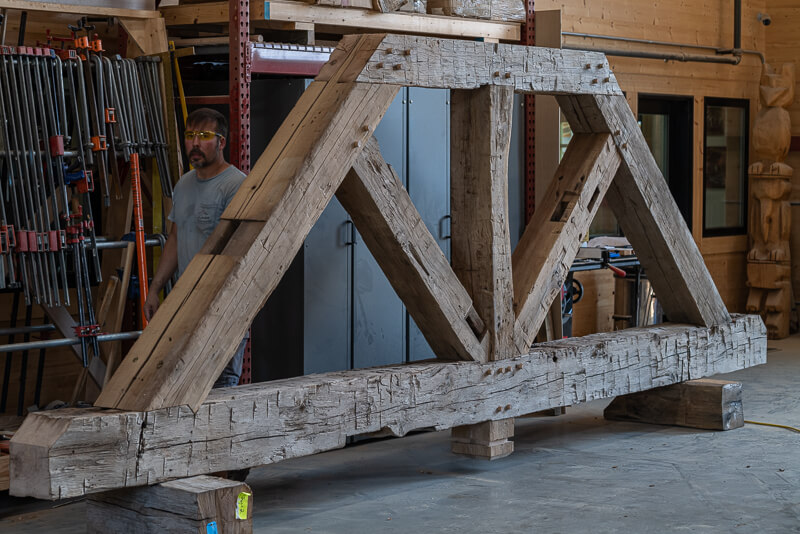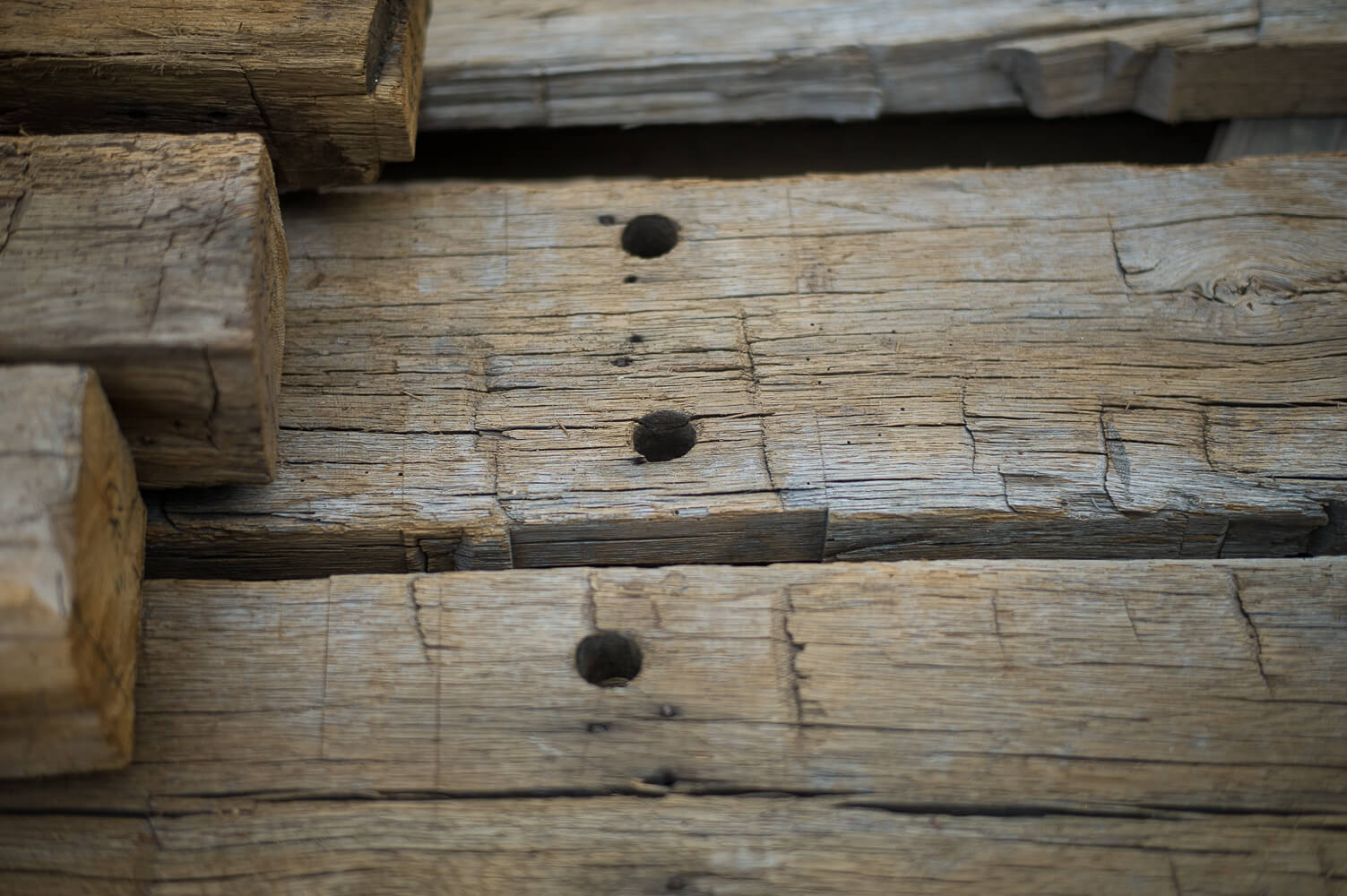
Hand hewn beams
or: putting old wood back to work
this started with a question
A builder who purchased reclaimed wood trusses for his client asked if we’d send some information on the original source of old hand hewn beams.
He acknowledged we probably wouldn’t know exactly which building or where the beams came from. But he wanted to know some general information—the approximate age of the reclaimed hand hewn beams; what they might have originally been used for; what some of the original holes and joinery were for; and anything else that might be of interest to his clients.
where do your antique beams come from?
From painstakingly dismantled barns that have weathered many storms (both literal and economic) but reached the end of their useful life.
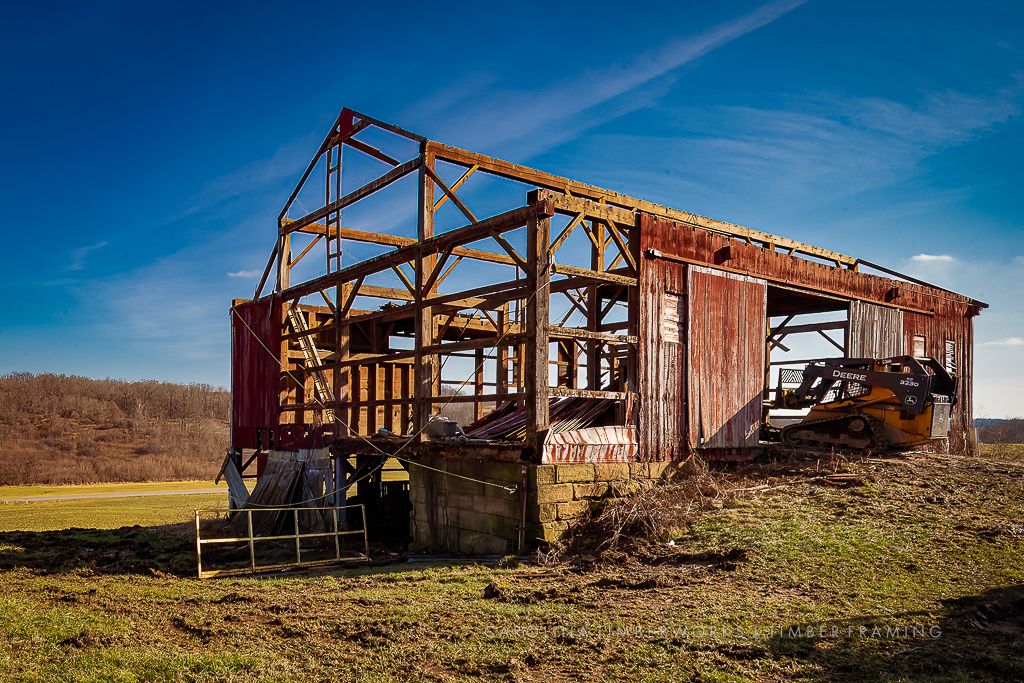
why would somebody sell their old barn?
Usually because the nature of farming has changed and the old barn layout (think posts in the way, haylofts, milking parlor) doesn’t work as well as a wide-open metal pole barn building on a concrete slab. Other times the barn hasn’t been used (or maintained) for years and a hard winter delivers a coup de grâce.
Occasionally the family farm is sold to a developer, or the heirs don’t have any sentimental connection to the barn and simply want to maximize the value. Tragically, not many years ago, these old barns were burned or scrapped. Today, thanks to television and social media, people are more aware of the value.
how old are the barns?
If the reclaimed beams are hand hewn, it’s a good bet that the barn was built before sawmills–from the mid-1700s to the mid to late 1800s. That makes the barn from 170 to 270 years old, with the average reclaimed barn about 220 years old.
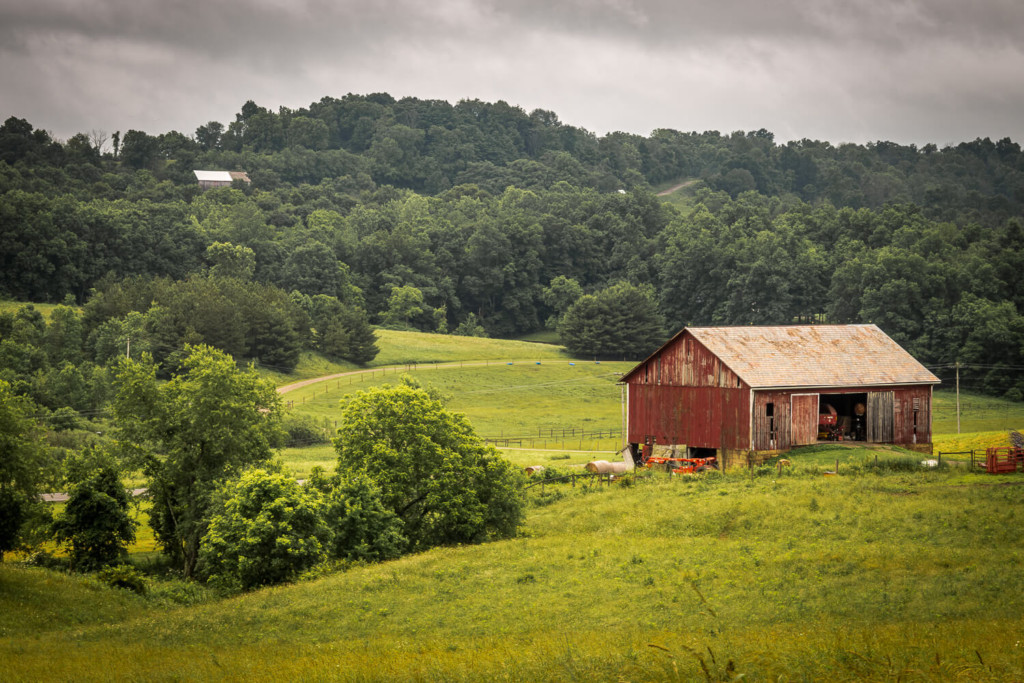
okay, so how old is the wood?
The trees for the barn were cut down from forests that had never been logged. Known as old-growth, virgin, or first-growth forest, these were forests that had grown for centuries undisturbed by axes or saws (fire is another story). A typical tree would have been from 200 to 400 years old. Assuming an average of 300 years at time of felling, the tree began life as a seedling 520 years ago (circa 1502).
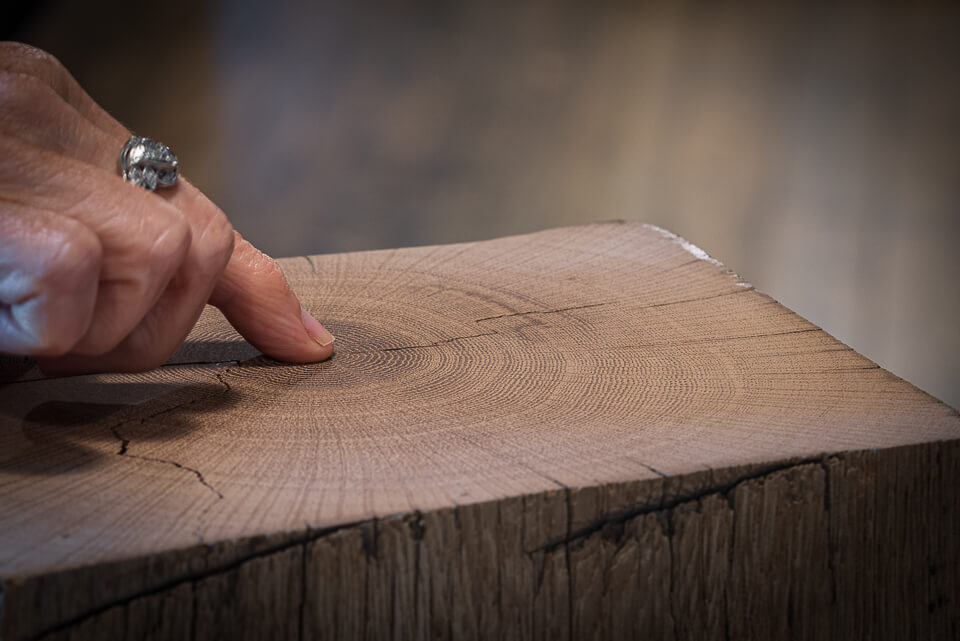
why not just hew new wood beams?
It can look contrived. It’s been said that the look is a bit like cultured stone: good from afar, but far from good.
how did the old-timers do it?
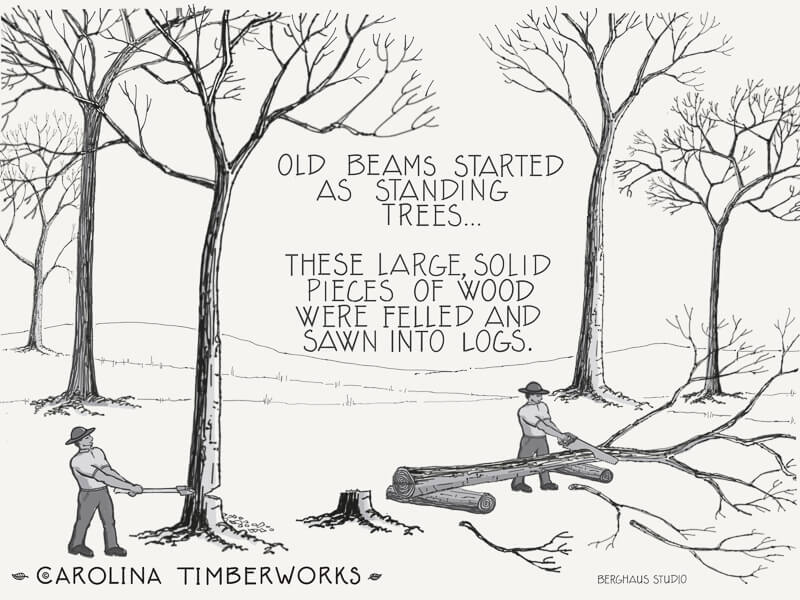
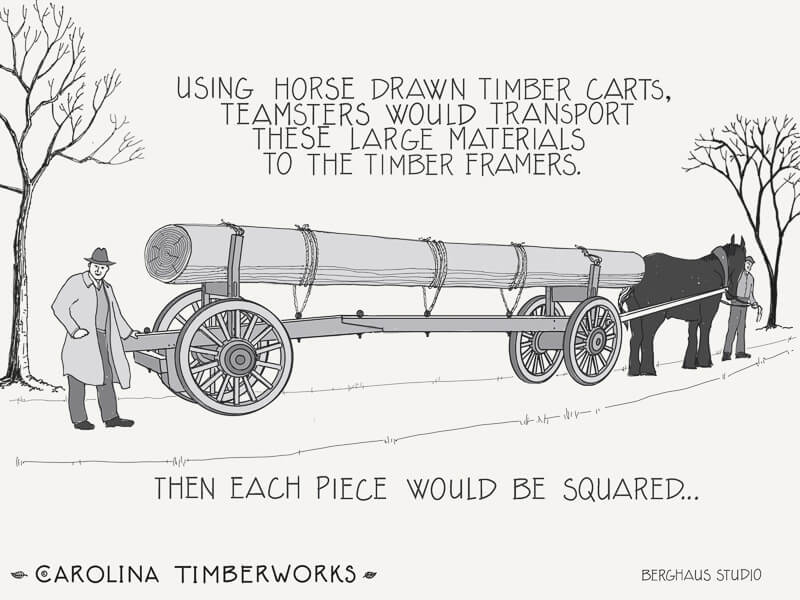
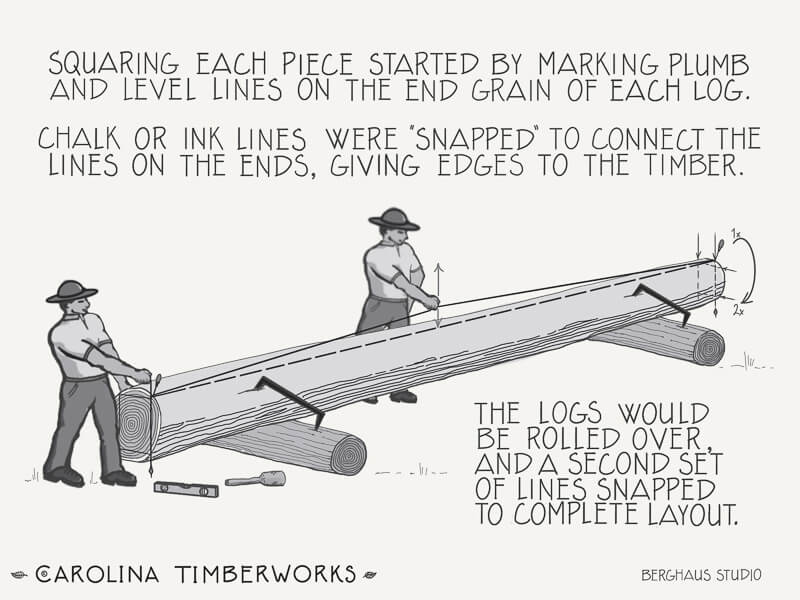

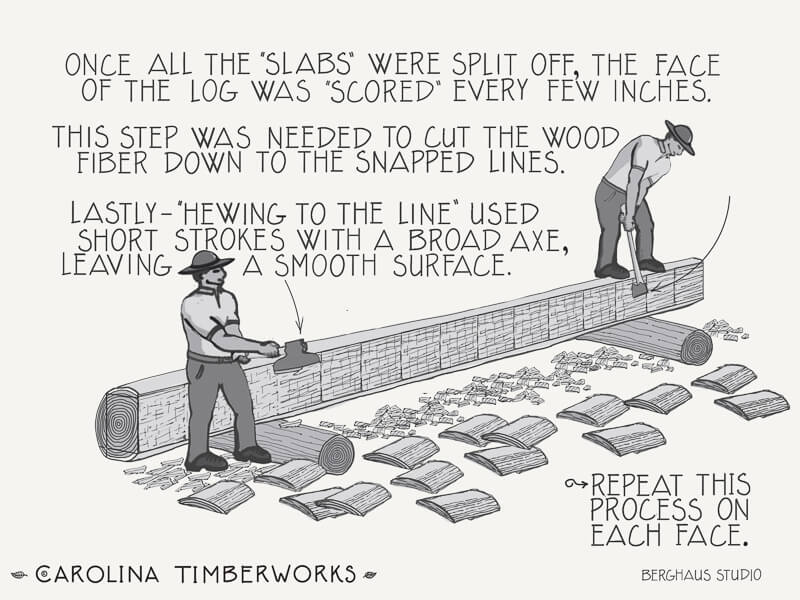
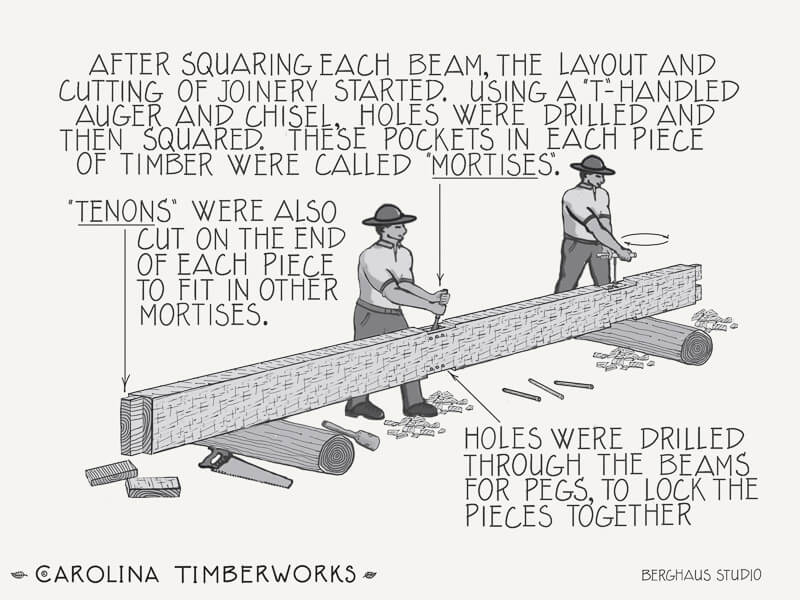
what was the original purpose of the holes and joinery in my antique wood beams?
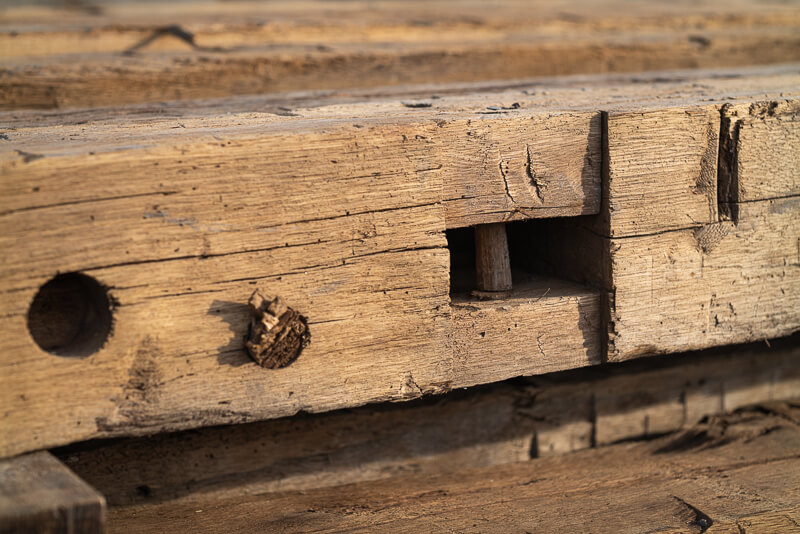
If the barn was timber framed (here’s the difference between timber frame and post and beam if you’re curious), your reclaimed beams will likely contain rectangular holes (mortises) and round peg holes similar to those shown above.
Timber framed structures were (and still are) connected using traditional pegged mortise and tenon joinery–meaning without nails, bolts, or metal plates.
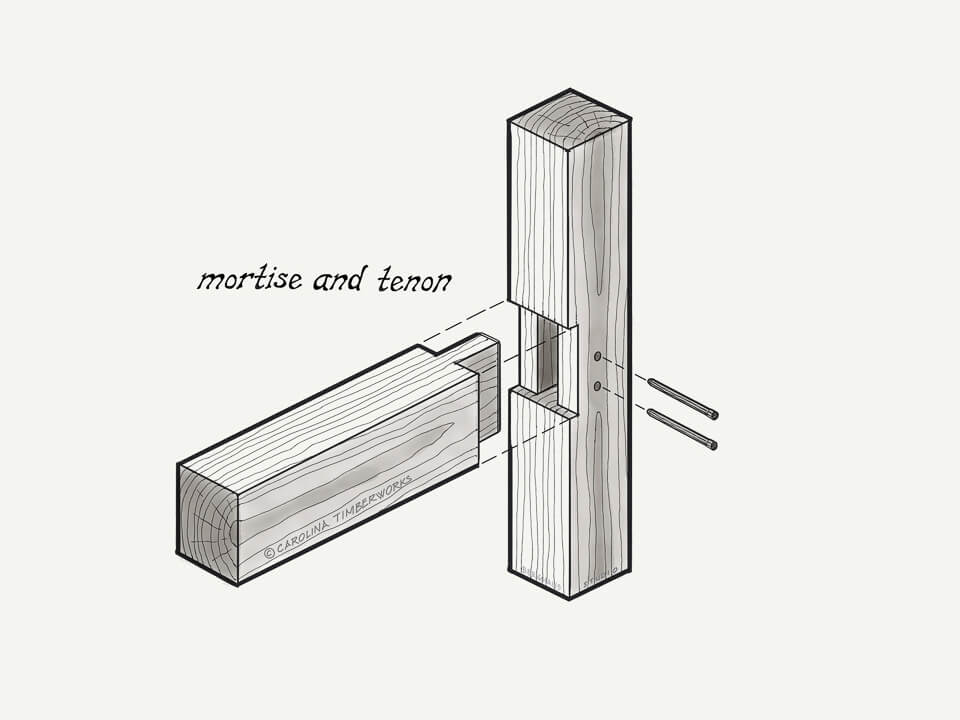
So the the mortise holes and other joinery you’re seeing are evidence that your beams were recovered from an antique timber frame (often an old barn).
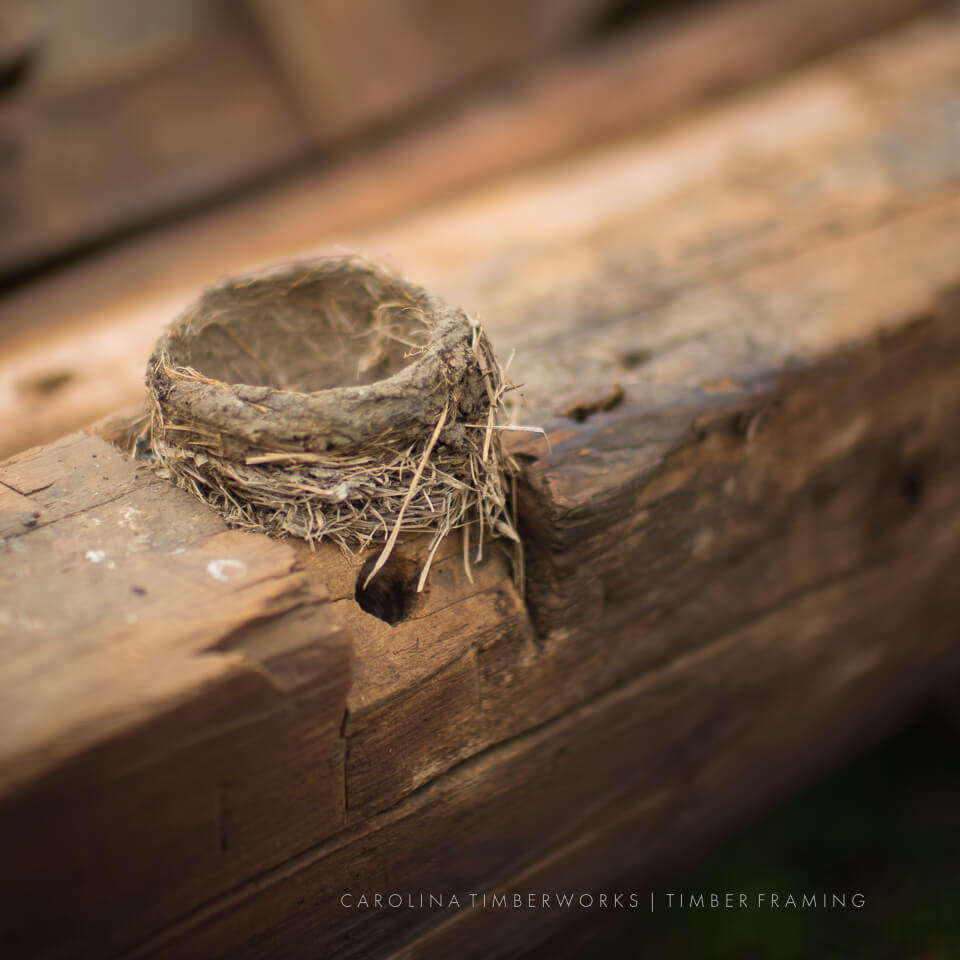
If your reclaimed wood beams don’t contain any joinery, it’s likely they came from an industrial post and beam structure (usually a factory or mill, but occasionally a WWII era military building).
By the way, we do not fill or patch mortise holes in reclaimed beams. It just doesn’t seem right to cover up examples of historical pre-industrial craftsmanship that was cut by hand.
Here in our North Carolina timber frame shop, we never tire of looking at old joinery; guessing what piece of the antique structure we’re looking at (was it a post, a plate, a rafter, or something else); and marveling at the work it took to cut joinery by hand. It’s also a fine way to fall asleep on a Sunday afternoon…
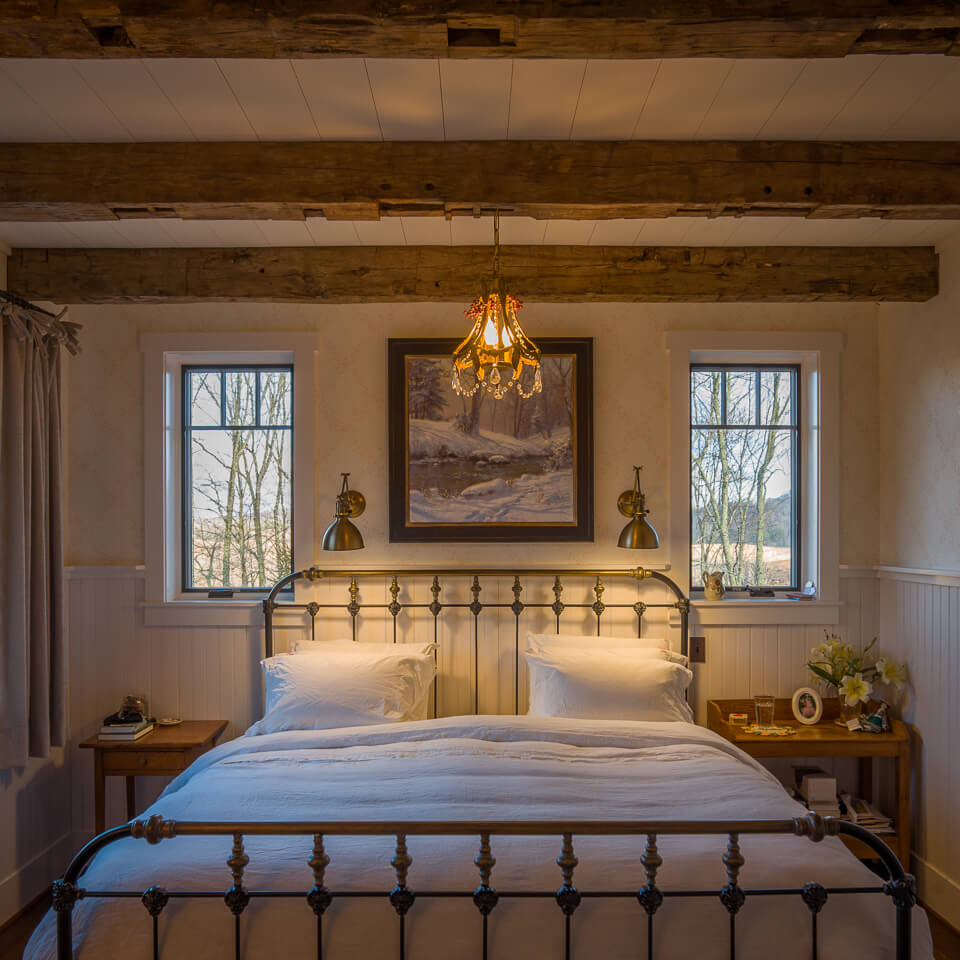
did you ever find out where the builder’s hand hewn beams came from?
We got lucky.
The owner of the barn had only one picture that survived:
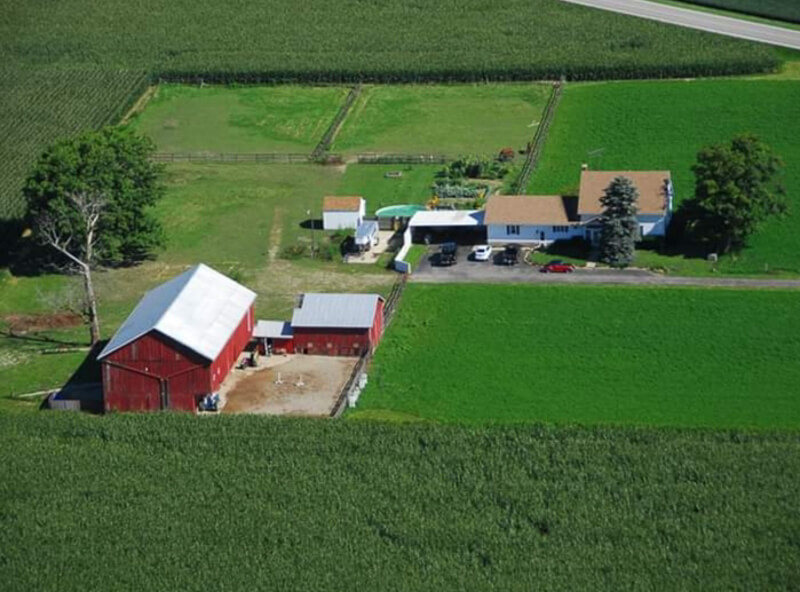
As it turns out this barn was not only erected once but erected twice and has been passed down through the family since the 1850s when it was originally erected. Within a few years of the barn being built, the railroad came through the valley and basically told the family their barn was in the way and they were taking it.
They were given a 3 month notice to vacate the property and remove all the livestock. Anything that remained after the 3 month window would be burnt down to make way for the railroad. They received a $300 payout for the barn, land, and the house.
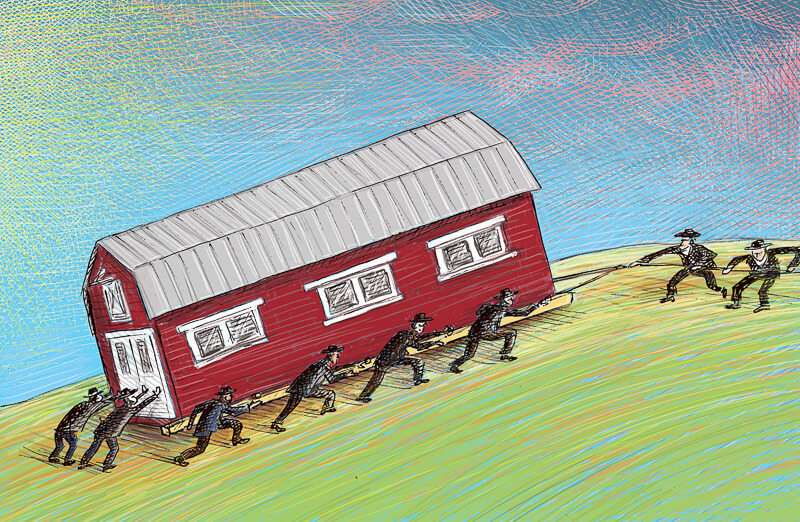
Given that the barn was only a few years old, the family elected to move the barn! They disassembled it piece by piece from the roof down, transported all the material about 5 miles away via horse and cart and then began to rebuild it in a new location.
Unfortunately, the customer couldn’t give me the exact location where the barn originally sat. Apparently his grandfather had developed Alzheimer’s before his passing and the story had changed several times over the years.
The current owner opted to sell the barn because he is in the armed forces and primarily staged overseas. He was quite proud of the legacy that followed along with the barn and said it gave him a “great peace of mind” knowing that the “heart of the barn” would continue to live on with somebody else.
